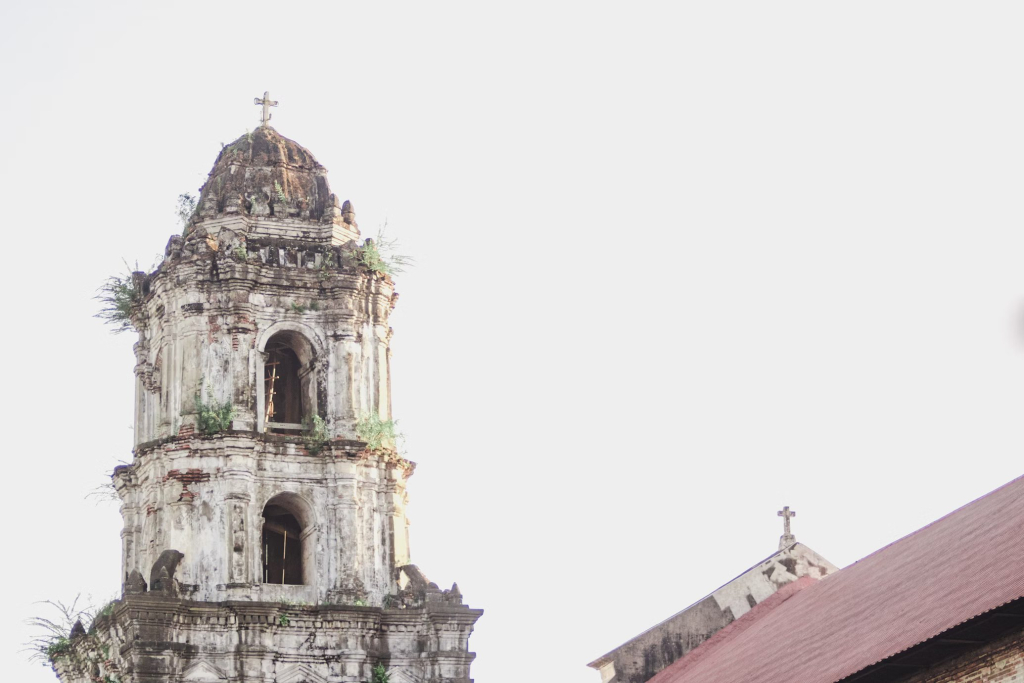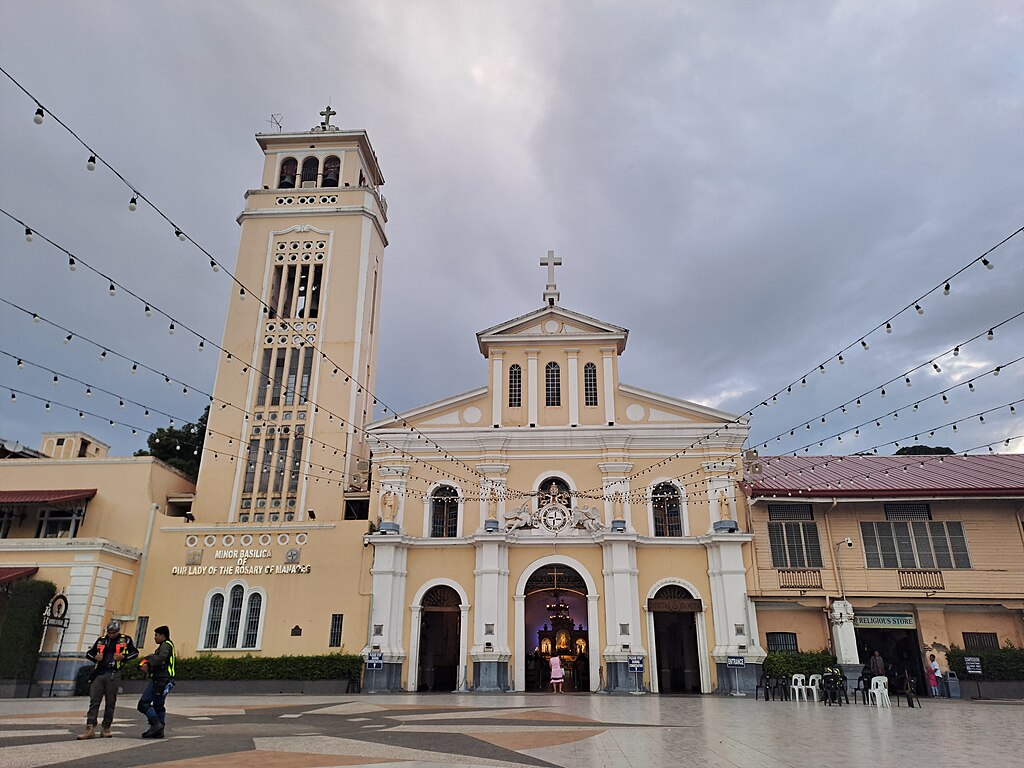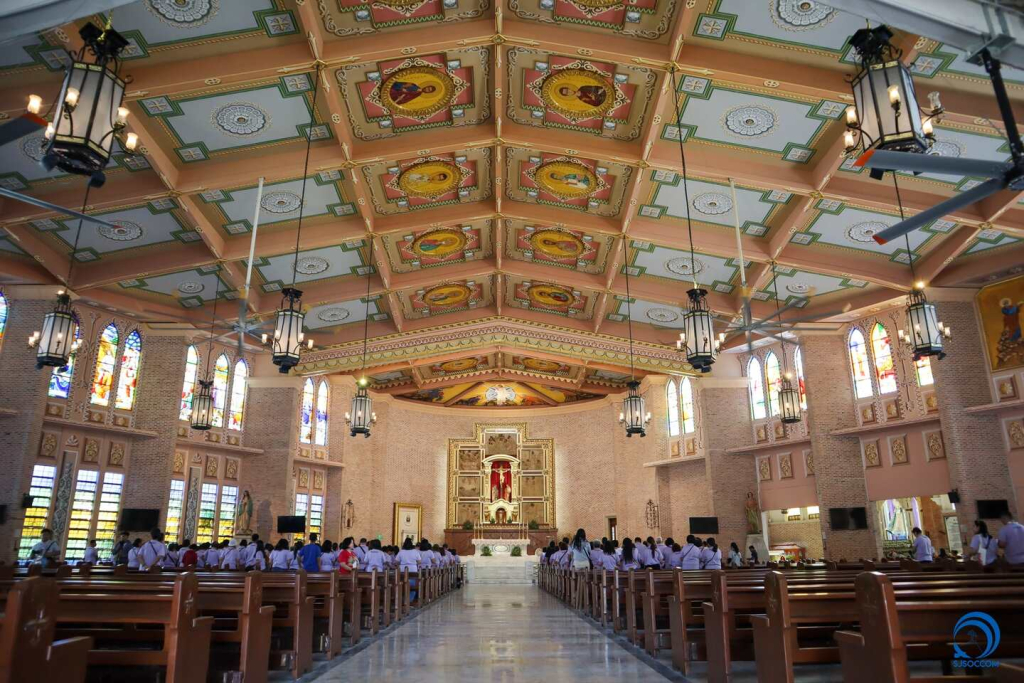
Pangasinan is a go-to summer destination for both locals and tourists. The province is famous for its pristine waterfalls, islands, and beaches overlooking the West Philippine Sea. It is also perfect for tourists who want to explore and devour tempting local cuisine.
Offering rich culture and diverse traditions
But these are just a few reasons why you should add Pangasinan to your bucket list. This humble province is not only bounded by the picturesque horizon and natural wonders. It also offers rich culture and diverse traditions blended through the years of colonialism.
Site for Roman Catholic Churches and captivating pilgrimage sites
Here, you can find numerous Spanish-era Roman Catholic Churches and captivating pilgrimage sites that will surely hearten your spiritual life. Here are the churches that you should include in your Visita Iglesia in Pangasinan.
Pangasinan Churches to Include in Your Visita Iglesia
Embark on a spiritually enriching experience in Pangasinan
Pangasinan, a province in the Philippines, offers a serene and spiritually enriching experience during Holy Week through the cherished tradition of Visita Iglesia. Pilgrims and devotees embark on a meaningful journey, visiting the beautiful churches that stand as timeless symbols of faith and devotion.
Churches steeped in history and architectural splendor
Each church, steeped in history and architectural splendor, becomes a poignant backdrop for reflection and prayer during this sacred week. The ornate interiors and intricate details of these churches add to the solemnity of the occasion, creating a profound atmosphere for worshippers.
Visita Iglesia in Pangasinan: A memorable and soul-stirring experience
From the small Purification Parish and Patriarch Church to the historic St. James the Great Parish Church in Bolinao and the awe-inspiring Manaoag Church, these sacred spaces provide a unique opportunity for locals and visitors alike to immerse themselves in the spiritual significance of Holy Week, making the act of visiting churches in Pangasinan a truly memorable and soul-stirring experience.
Saint Vincent Ferrer Parish Church
A testament to faith and architectural brilliance
Saint Vincent Ferrer Parish Church in Pangasinan stands as a testament to both faith and architectural brilliance. Located in Bayambang, this historical church is dedicated to Saint Vincent Ferrer, the patron saint of builders.
Dating back to the Spanish colonial period, the church boasts a captivating blend of Baroque and Neo-Gothic architectural styles. Its grand facade, adorned with intricate carvings and details, welcomes both pilgrims and architecture enthusiasts alike.
The church’s interior is equally remarkable, featuring majestic columns, ornate altars, and vivid stained glass windows that bathe the space in a warm, colorful glow.
The Saint Vincent Ferrer Parish Church not only serves as a place of worship but also as a living testament to the cultural and religious heritage of Pangasinan.
Pilgrims and visitors are drawn to its sacred atmosphere, making it a notable destination for those seeking spiritual solace and appreciation for historical craftsmanship.
Hyacinth Parish Church
A sanctuary that offers a sense of serenity
Nestled in the heart of Pangasinan, lies the historic Hyacinth Parish Church, a captivating landmark whispering tales of centuries past. Established in 1590, the church stands as a testament to the enduring faith and artistry of the Filipino people.
Its imposing facade, constructed with red bricks and adorned with intricate details, reflects the Baroque architectural style prevalent during the Spanish colonial era.
As you step inside, the cool sanctuary offers a sense of serenity, while the beautifully crafted hardwood altars and religious imagery transport you back in time, making the Hyacinth Parish Church a must-visit for history and culture enthusiasts.
Minor Basilica of Saint Dominic
A crown jewel in the heart of San Carlos city
Standing tall in the heart of San Carlos City, Pangasinan, the Minor Basilica of Saint Dominic is a crown jewel, both historically and architecturally.
Completed in 1773, it boasts the distinction of being the largest Catholic church ever built in the Philippines during the late 18th century. Despite facing destruction from earthquakes, the church persevered, its red brick facade a testament to its resilience.
Its impressive interior, spanning 89 meters, features high ceilings and both upper and lower windows, highlighting the grandeur of its design.
In 2023, the church was officially declared a Minor Basilica by Pope Francis, solidifying its significance as a sacred space and a center of faith for generations of Filipino Catholics.
Minor Basilica of Our Lady of the Rosary of Manaoag

The highest-rated destination in the country for Catholic tourists all over the world
Located in Manaoag, Pangasinan is The Minor Basilica of Our Lady of the Rosary of Manaoag, or simply called Manaoag Church. It is the highest-rated destination in the country for Catholic tourists all over the world.
According to the Provincial Tourism and Cultural Affairs Office, about 9 million tourists visited the province last 2018, and 7 million of them visited Manaoag Church. The church is only 16 minutes away from Tarlac-Pangasinan-La Union Expressway or TPLEX, Binalonan Exit.
It was built in the 17th century and is believed to be miraculous. One local farmer saw the Virgin Mary’s apparition at the pilgrimage site. During World War II, one of the several bombs that the Japanese dropped in the area did not go off and left the ivory statue unharmed.
Because of these miracles, thousands of people come rushing to this site all year round. There are also wishing fountains, candle lighting, faucets of holy water, and relics outside and can also be bought inside. You can also get these objects and even your vehicles blessed after the holy mass.
Parish of Saint Fabian, Pope and Martyr

Named after a crusading pope, St. Fabian
Founded in 1718 and was initially built in 1768, The Parish of Saint Fabian, Pope, and Martyr had undergone different restoration stages throughout the century.
It was first restored in 1856 after a fire incident that started from a cigarette-end which was thoughtlessly thrown on its nipa roofing. While in 1955, the church went through its last major restoration.
The Parish of Saint Fabian, Pope, and Martyr is located in San Fabian, Pangasinan. The church and the town were named in respect of a crusading Pope, St. Fabian, who led the Roman Catholic Church throughout the sovereignty of the Roman Emperor Dictus for nearly 13 years.
The church is located only a few minutes away from San Fabian’s soft-sand beach. It serves as an enjoyable side trip that you can also add to your itinerary.
St. Thomas Aquinas Parish Church
A place for devotion and reflection
St. Thomas Aquinas Parish Church is located in Mangaldan, Pangasinan, one of the province’s historic old towns. Based on ancient documents, this church was the third parish established by Dominican missionaries and was attributed to the blessed Fr. Juan Sto. Domingo.
Around 1600, Mangaldan was then acquired as a new parish and was later placed under the patronage of one of the Catholic Church’s greatest theologians and philosophers, St. Thomas Aquinas.
St. Thomas Aquinas Parish Church became one of the most essential parishes of the Archdiocese. The construction of the 6th and current church in Mangaldan happened in 1942, which then laid the foundation for devotees to build up their faith and spiritual beliefs.
At present, the Dominican missionaries have enhanced the parish to give the locals a place for devotions and reflection.
St. John the Evangelist Cathedral

This Metropolitan Cathedral belongs to the Roman Catholic Archdiocese of Lingayen-Dagupan. It is located within the business district of the City of Dagupan in Pangasinan. The Archbishop’s House and the St. John’s Cathedral School can also be found near the cathedral.
It was recently renovated in 2018, where they replaced the old stained glass and added stunning paintings on the high ceiling.
Dagupan City is known for its reputable schools and universities. This is why foreign students are attracted to live here.
Because of this, you will see diverse nationalities coming to the cathedral to pray and worship, and it’s a good thing that the church service is frequently arranged in the English language. So not only locals can appreciate the holy mass but also foreigners and even tourists from other provinces.
Sts. Peter and Paul Parish Church
Preserving timeless beauty
Among all the churches listed here, Sts. Peter and Paul Parish Church in Calasiao, Pangasinan, is my personal favorite. It flaunts its red and brick color rather than the usual flattering paintings on the ceiling.
Aside from the grand antique wooden door, it also welcomes you with a very long carpet that will lead you to its distinct main altar. The latter being the main attraction of this Spanish-colonial-era church.
It was between the 17th and 19th century when this baroque church was erected but was founded earlier in 1588. During the past years, minor restoration has been done to alter the effects of natural calamities and man-made damages.
Regardless of its age, this church was never fully renovated, preserving its timeless beauty up to this moment. The National Museum of the Philippines and the National Commission for Culture and the Arts declared Sts. Peter and Paul Parish Church as a National Cultural Treasure.
Holy Family Parish Church
One of Pangasinan’s oldest churches
The Church is adorned with outer brick walls at the side and adjacent long convent, while its main altar is made of stained glass. Graced with a tranquil atmosphere ideal for prayer and meditation, this church is located at the heart of the province, Sta. Barbara.
Holy Family Parish was founded in 1588 and was built in 1716, making it one of the oldest churches in Pangasinan. The church is also a part of the Roman Catholic Archdiocese of Lingayen-Dagupan.
When the town experienced a devastating typhoon in 1887, locals started a campaign entitled Guardians of the Family.
This aimed to renovate and reconstruct the parish church after being left with a damaged roof. The convent, as well as the surroundings of the church, was also renovated under the campaign.
Further enhancements in 2005 include the two new side altars in the church, the new parish Office, the new parish hall, the new sacristy, the new parish grotto of Our Lady of Manaoag, the garden of the cross, chapel of devotion, and rosary garden, villa familia, and the choir loft.
Our Lady of Immaculate Conception Cathedral
Based on records, the town Urdaneta was named after a priest, Andres de Urdaneta. During the days, the town was still young and is just starting to grow in population.
In the 17th century, more people from the neighboring provinces like La Union and Ilocos came to this town to establish their residence. Subsequently, a chapel was then built in the area.
It was initially constructed with a single slope roofing and a small structure similar to huts. It was 1863 when the Dominicans recognized it as a parish.
The construction of the first church in Urdaneta was completed in 1884; however, during World War II in 1945, the church was heavily damaged by the American bombings. The ruins were then transformed and paved the way for the community’s newly established high school.
His Holiness Pope John Paul II issued two decrees called the papal bull, De Superna Animarum, and Non-Raro Catholicorum on January 12, 1985, which then directed the Diocese’s construction of Urdaneta.
The Immaculate Conception Parish became the Seat of the Diocese of Urdaneta and is now called the Immaculate Conception Cathedral.
In due course, Urdaneta City has grown progressively in terms of religion and economy. It has an urbanization level of 68.61% and has been identified as a province’s growth pole. The city was also recognized as one of the region’s cleanest, greenest, and most livable cities.
This is why it is not surprising to see various industry players interested in the city’s thriving potential. One of which is the country’s favorite and trusted home builder with the broadest geographic reach, Camella.
Featuring its safe and healthy homes, Camella indeed associated its offerings with the city’s mission of promoting a healthy and safe environment. And did you know that the healthiest master planned community in the North will soon rise in Urdaneta City?
Yes, Camella Crisciente is only an 8-minute drive to Our Lady of Immaculate Conception Cathedral and a 20-minute drive to Minor Basilica of Our Lady of the Rosary of Manaoag.
So these are the must-visit churches in Pangasinan that you should include in your next Visita Iglesia. Whether you are in for the sea, nature, or serene pilgrimage sites and churches, Pangasinan definitely has it all!

Celebrate Life’s Milestones in Camella!
Make unforgettable memories in a Camella home.
Our communities are designed to elevate your living experience.


